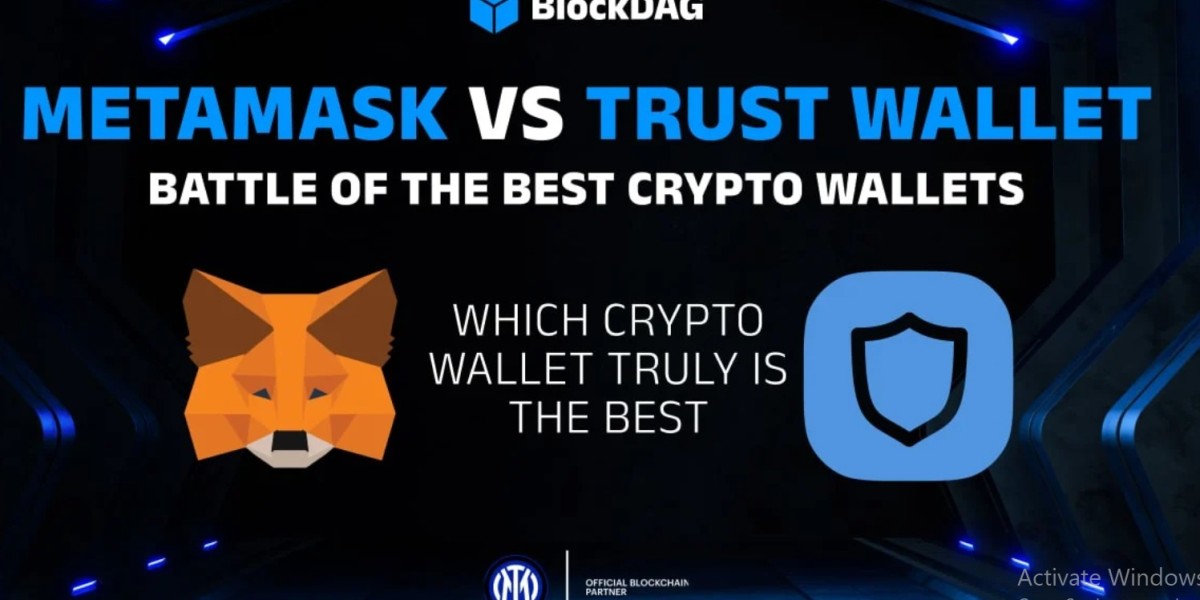1. Introduction to the Wallet Wars
As cryptocurrency adoption continues to rise globally, the demand for secure and efficient wallets grows in parallel. Two of the most prominent non-custodial wallets used by millions of crypto users worldwide are MetaMask and Trust Wallet. Both allow users to securely store, send, and trade cryptocurrencies, while also enabling access to DeFi applications, staking options, and NFTs. But which one is the better option for you? This blog dives deep into the features, advantages, difference between metamask vs trust wallet and limitations of both wallets to help you make an informed choice.
2. MetaMask Vs Trust Wallet: Key Differences Overview
While both wallets share core functionalities, they diverge in areas such as blockchain support, token swapping, NFT management, staking, and user experience. Let’s explore these in detail.
3. Blockchain Compatibility
MetaMask was originally designed exclusively for Ethereum and has since evolved to support other EVM-compatible blockchains like Binance Smart Chain and Polygon. However, users must manually configure these additional networks within the wallet.
In contrast, Trust Wallet supports a broader range of blockchains by default, including Ethereum, Binance Smart Chain, Solana, and other Layer-1 protocols. This native multi-chain support makes Trust Wallet more convenient for users dealing with various networks, especially beginners.
4. Token Swapping Features
Both wallets integrate token-swapping functionality directly within the app.
MetaMask allows users to swap Ethereum-based tokens using its in-app swap feature but is limited to assets within the Ethereum ecosystem and EVM-compatible networks.
Trust Wallet, on the other hand, offers more flexibility by supporting token swaps across different chains, including Binance Smart Chain. This gives users a wider range of token options and potentially lower fees depending on the network.
5. NFT Handling
NFTs (Non-Fungible Tokens) are supported on both wallets, but their user experiences differ.
MetaMask is more Ethereum-centric and lacks an optimal interface for managing NFTs from other networks. This limitation makes it less ideal for users who own NFTs across multiple blockchains.
Trust Wallet provides a more intuitive and comprehensive NFT experience, supporting a wider array of blockchains and offering a cleaner interface for viewing and managing NFT collections.
6. dApp Browsing Capability
Both wallets provide access to decentralized applications (dApps), but their methods and effectiveness vary.
MetaMask’s browser extension makes it a preferred choice for desktop-based users engaging in Web3 applications. Though it also offers a mobile dApp browser, the desktop version delivers superior performance.
Trust Wallet also includes a mobile dApp browser and has launched a browser extension for desktop use, attempting to bridge the gap with MetaMask. It offers a good browsing experience, especially for mobile-focused users.
7. Staking Opportunities
Trust Wallet shines when it comes to built-in staking options. Users can stake assets like BNB, Tezos (XTZ), and many others directly through the app, earning passive income without third-party platforms.
MetaMask, while supportive of staking, primarily focuses on Ethereum staking and has recently expanded its features to include liquid and validator staking. Still, its options are somewhat limited compared to Trust Wallet.
8. Security Measures
As non-custodial wallets, both MetaMask and Trust Wallet ensure users maintain full control over their private keys. Their open-source codebases allow for public review and transparency.
That said, both wallets share similar vulnerabilities—mainly related to user error and phishing attacks. Since security depends heavily on user behavior, following best practices like using hardware wallets, enabling biometric logins, and double-checking transaction URLs is critical.
9. User Experience (UX) and Accessibility
MetaMask offers a straightforward interface but requires manual configurations when connecting to non-Ethereum networks. This process can be intimidating for new users, though comprehensive guides are widely available online.
Trust Wallet excels in user-friendliness. It automatically supports multiple blockchains, making multi-chain transactions simpler and more seamless. It is especially suitable for those who prefer minimal setup and want a plug-and-play wallet experience.
10. Transaction and Swap Fees
Both wallets calculate gas or network fees dynamically based on blockchain congestion. While MetaMask and Trust Wallet apply small swap fees when using their internal exchange functions, the price difference is usually insignificant and not a major deciding factor.
11. Choosing the Right Wallet for Your Needs
If your crypto activities primarily revolve around Ethereum DeFi protocols and you frequently engage with desktop-based dApps, MetaMask is the more suitable choice. It offers a robust browser extension and deep integration with Ethereum’s ecosystem.
If you are more interested in NFTs, mobile crypto management, staking, or working across multiple chains, Trust Wallet provides greater versatility and a smoother user experience, especially on mobile devices.
12. The Next Big Thing: BlockDAG is the Future Beyond Wallets
While comparing wallets is essential for crypto management, the real evolution is happening at the infrastructure level—and BlockDAG is at the forefront of this revolution.
Unlike traditional blockchain architecture, BlockDAG introduces a hybrid model combining blockchain and Directed Acyclic Graph (DAG). This structure significantly improves transaction speed, scalability, and data security.
The project’s explosive popularity is evident in its presale performance, having raised over $216 million and selling more than 19.3 billion tokens in its 27th batch at a price of $0.0248 per token.
13. BlockDAG Mining and Community Growth
BlockDAG isn’t just a technological innovation; it’s also building a robust mining ecosystem. It offers:
X10 Miner: A compact device that generates 200 BDAG per day
X100 Miner: A high-powered ASIC miner capable of producing 2,000 BDAG daily
With over 15,850 units sold, BlockDAG is quickly gaining traction among miners.
Furthermore, its Ambassador Program encourages global community participation through event hosting, promotion, and education. Partnerships with major firms are also increasing its legitimacy and market presence.
14. Final Verdict: Wallets Today, Infrastructure Tomorrow
Both MetaMask and Trust Wallet serve the essential role of managing digital assets.
Choose MetaMask for Ethereum-focused desktop usage and dApp interactions
Choose Trust Wallet for multi-chain asset management, NFT collection, and easy staking on mobile
However, the future lies beyond just wallets. Innovations like BlockDAG are pushing the crypto space into new territories. With scalable infrastructure, efficient mining, and a growing community, BlockDAG may very well be the next leap in blockchain evolution.
15. Conclusion
In the battle of wallets, both MetaMask and Trust Wallet are top contenders, each serving different needs and user preferences. But for those looking ahead, it's clear that wallet technology is just the beginning. With projects like BlockDAG redefining blockchain architecture, the crypto world is set to become faster, more scalable, and more decentralized than ever before. Whether you’re a casual user or a serious investor, now is the perfect time to explore both trusted wallets and promising projects like BlockDAG.








